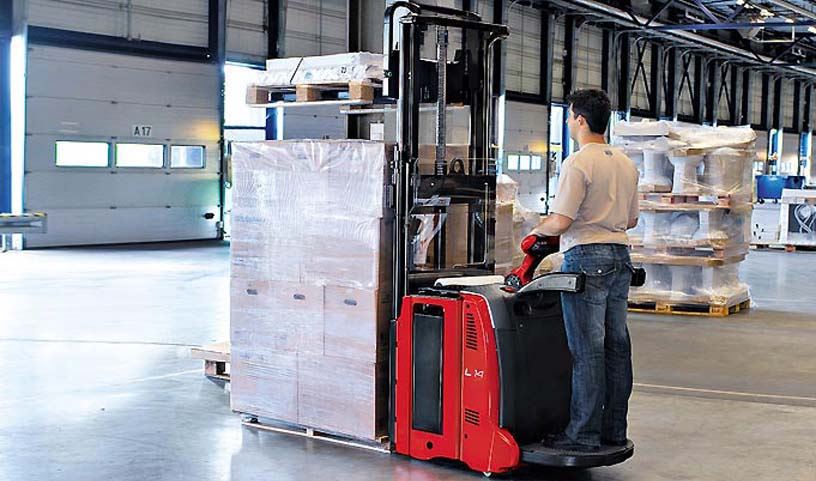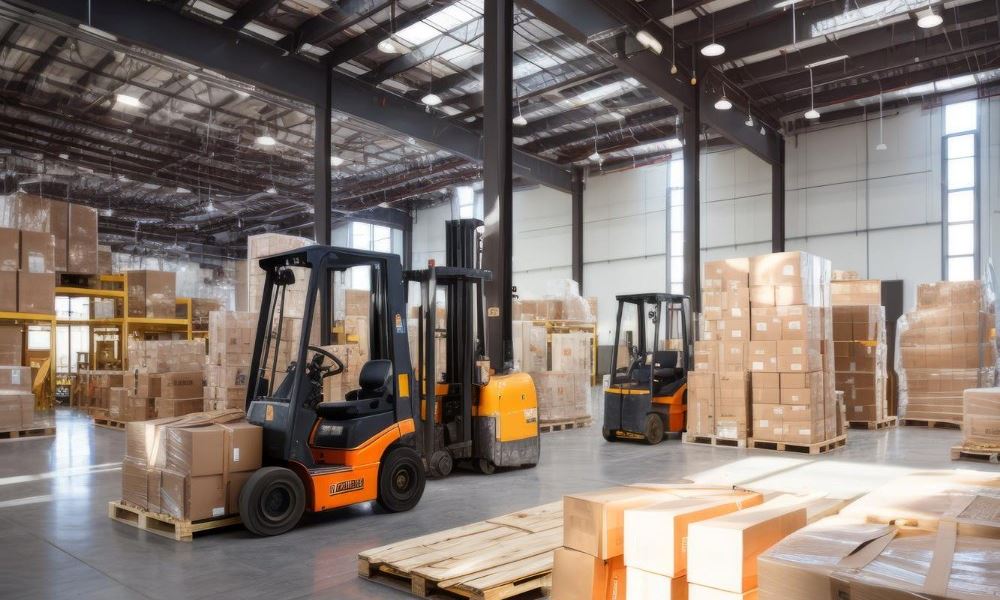Electric stacker - general safety rules during operation
Safe operation of stackers is essential to prevent injuries and accidents in the workplace. Improper use can endanger people's lives and health and lead to serious accidents.
Basic safety requirements during operation
The operation of an electric stacker requires compliance with special safety rules. Maintenance must be carried out before the start of each shift. Only trained and certified personnel should be allowed to operate it.
During the operation of the electric stacker, safety rules must be strictly observed. When performing the assigned work, the technology developed for this type of cargo should be followed. It is forbidden to use methods of accelerating the operation that violate safety rules.
How to avoid emergencies when working with an electric stacker?
Preventing accidents starts with understanding how to properly operate an electric stacker. The safety rules are simple:
- Avoid overloading. Exceeding the stacker's load capacity can lead to tipping or mechanical failure.
- Be aware of the condition of the warehouse floor. A wet, uneven or cluttered surface increases the risk of tipping over during a sudden maneuver.
- Do not make sudden maneuvers. Smooth and gradual movements of the stacker reduce the risks of skidding, tipping, and collisions.
- Use personal protective equipment: special shoes and clothing can prevent injuries.
Knowing common mistakes when operating stackers helps you avoid repeating them.
Regular inspection and maintenance of stackers
Regular maintenance of forklifts is essential for their longevity and safety. Proper battery care for electric forklifts is crucial. To prevent battery-related malfunctions, proper charging procedures are essential.
It is important to carry out a daily inspection of the stacker before each shift. The most important and mandatory points are:
- Check the functionality of the service and emergency brakes.
- Inspect the hydraulic system for leaks and damage.
- Check for cracks, bends, or wear on the load-grabbing mechanism.
- They monitor the cleanliness of the stacker and regularly remove dust from the protective glass.
- Check the operation of the sound signal.
In addition to daily inspections, scheduled maintenance of stackers should be carried out at the intervals recommended by the manufacturers. If worn or damaged parts are found, they should be replaced to maintain safe operation.
Operator liability for safety violations
Persons who have reached the age of 18 and have undergone training as stacker operators are allowed to work. After the introductory and initial briefing, they can start working. Since all employees are only adults, they are fully responsible for violating safety rules. Depending on the consequences, operators may be held disciplinary, administrative, and even criminally liable. In case of material damage, they must compensate for it voluntarily or by court order.
Tips for safe stacker operation
The operator must know the basic requirements for electric stackers and comply with them. He must ensure that there are no people in the area where the stacker is moving or where the goods may fall. It is forbidden to enter narrow aisles if there is a risk of hitting people or colliding with another stacker. The stacker operator must maintain a reasonable speed when manoeuvring, especially in busy warehouses, in order to minimise the risk of accidents.
The load must always be properly and securely secured to prevent it from moving or falling during transportation. Its maximum weight cannot exceed the maximum permissible for this model of stacker. Only pallets that are in good condition and do not exceed the permissible dimensions may be transported. The operator is fully responsible for observing safety rules when operating the stacker.


